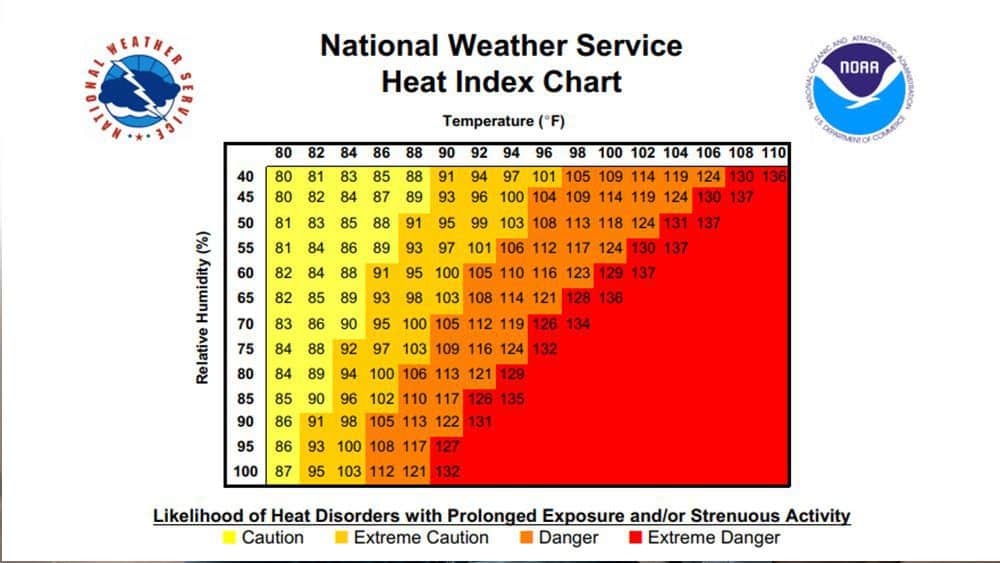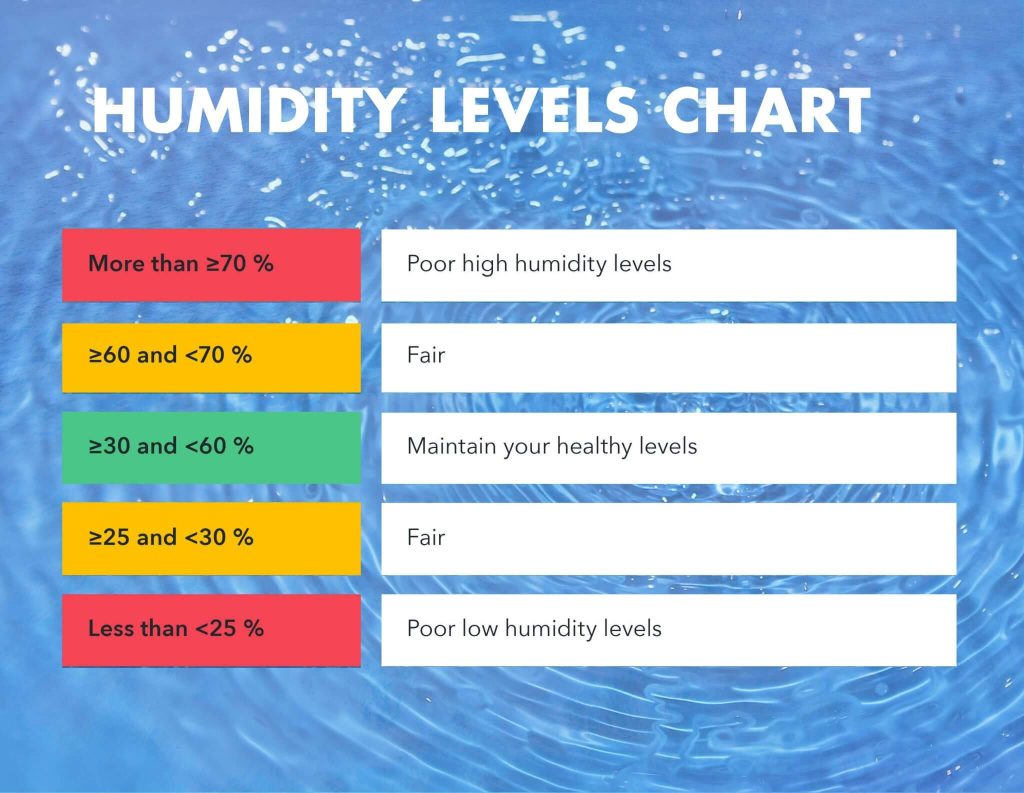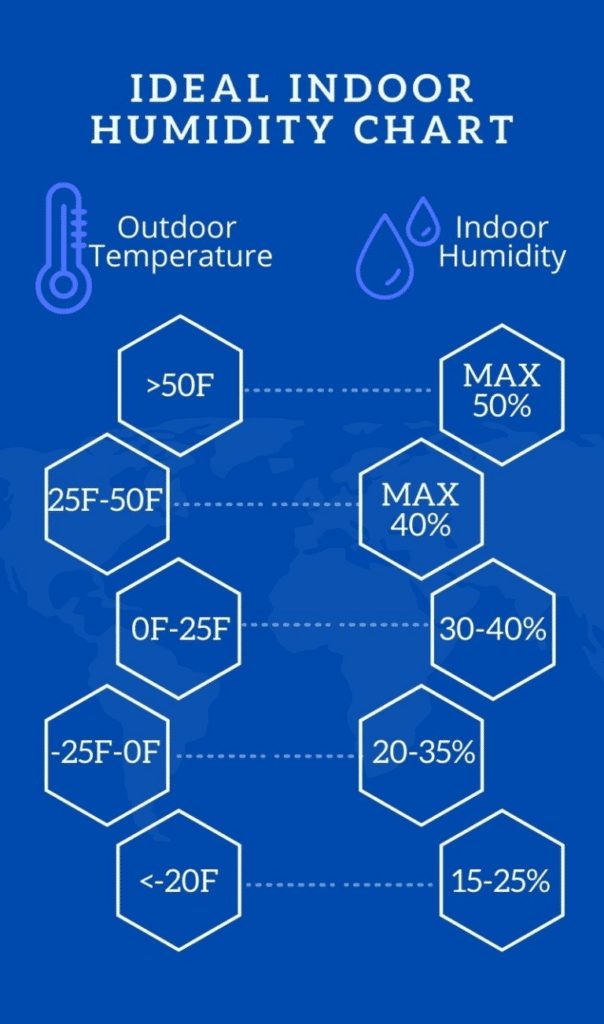Maintaining the perfect indoor humidity during the hot summer is crucial for a comfortable and healthy living environment.
But what exactly is the ideal humidity level to strive for? Too much moisture can lead to a sticky and uncomfortable atmosphere, while too little can cause dryness and irritate your respiratory system.
In this article, we will explore the recommended range for indoor humidity during the summer, providing valuable insights to create a pleasant and balanced home environment.
Review contents
What Is the Ideal Indoor Humidity Level at Home in Summer?
Introduction
When creating a comfortable home environment, maintaining the right indoor humidity level is crucial. Summer, with its hot and humid weather, can often make it challenging to strike that perfect balance.
This article will explore the ideal indoor humidity level for summer and understand the effects of high and low humidity on our homes and health. We will also discuss the factors influencing indoor humidity, tips for reducing excessive humidity, and methods for increasing humidity when it falls too low.
Understanding Humidity and its Effects
Humidity refers to the amount of moisture in the air, which plays a significant role in determining our comfort and well-being. High humidity can make us feel hot and sticky, while low humidity can lead to dryness and discomfort.
Additionally, humidity levels can impact the structural integrity of our homes and even our health. Understanding the effects of humidity is essential in creating a comfortable living environment.
Importance of Maintaining Optimal Indoor Humidity
Maintaining optimal indoor humidity is crucial for several reasons. Firstly, it ensures comfort, allowing us to relax and enjoy our homes without feeling too hot or dry.
Secondly, optimal humidity levels preserve our homes’ integrity by preventing mold growth, wood warping, and paint damage. Lastly, the right humidity level promotes better respiratory health and reduces the risk of allergies, asthma, and other related conditions.
Factors Affecting Indoor Humidity Levels
Several factors can affect the indoor humidity levels in our homes. External weather conditions, such as the temperature and humidity outdoors, play a significant role.
Additionally, indoor activities such as showering, cooking, and even the number of occupants in the house can contribute to fluctuations in humidity levels. Understanding these factors can help us better manage indoor humidity.
Recommended Indoor Humidity Levels in Summer
The ideal indoor humidity level for most homes in summer typically ranges between 40% and 60%. This range strikes a balance between preventing moisture-related issues and promoting comfort.
However, it is essential to note that individual preferences may vary, and certain regions with extreme weather conditions may require slightly different humidity ranges. It is best to monitor and adjust humidity levels based on personal comfort and the specific needs of your home.
Consequences of High Indoor Humidity
Allowing indoor humidity to rise above the recommended levels can have several consequences. Excessive moisture in the air promotes the growth of mold and mildew, which can cause structural damage to our homes and pose health risks.
High humidity can also make our living spaces feel uncomfortable and stuffy and promote the proliferation of dust mites. Additionally, it can worsen respiratory conditions like asthma and allergies, making it essential to control humidity levels effectively.
Consequences of Low Indoor Humidity
While high humidity can be problematic, low humidity levels can create issues. Insufficient moisture in the air can lead to dry skin, irritated eyes, and respiratory discomforts such as dry throat and nasal passages.
It can also cause wood furniture to crack, paint to chip, and static electricity to build up. To ensure optimal comfort and maintain the integrity of our homes, it is crucial to prevent humidity levels from dropping too low.
Familiar Sources of Excessive Indoor Humidity
Understanding the sources of excessive indoor humidity can help us effectively address and reduce high humidity levels. Everyday activities such as showering, cooking, drying clothes indoors, and even breathing can release moisture into the air.
Moisture infiltration from leaky pipes, roofs, or poorly sealed windows can also contribute to high humidity. By identifying these sources, we can take proactive measures to keep humidity levels in check.
Tips for Reducing Indoor Humidity
If you find that your home’s humidity levels are consistently high, there are several steps you can take to reduce it. Firstly, ensure proper ventilation throughout your home using exhaust fans in kitchens and bathrooms.
Fix any leaks or sources of excess moisture promptly. Utilize dehumidifiers to remove moisture from the air, and consider using air conditioners or fans to create air movement and aid in drying. Limit activities that generate moisture, such as drying clothes indoors and keeping windows closed on particularly humid days.
Tips for Increasing Indoor Humidity
If your home’s humidity levels fall too low, there are methods to increase them. Using humidifiers as standalone devices or attachments to heating systems can help add moisture to the air. Placing water bowls near heat sources or using indoor plants can also raise humidity levels.
Additionally, avoiding excessive use of air conditioning or heating can prevent moisture depletion in the air. Monitoring humidity levels and adjusting accordingly is critical to maintaining a comfortable environment.
Conclusion
Maintaining the ideal indoor humidity level at home during summer is essential for our comfort, health, and the longevity of our homes.
By understanding the effects of high and low humidity, identifying potential sources of excessive humidity, and implementing practical tips for humidity control, we can create a living space that ensures our well-being.
Remember, achieving optimal indoor humidity is a continual process that requires attentiveness, but the benefits of a comfortable and healthy home environment make it all worthwhile.








































